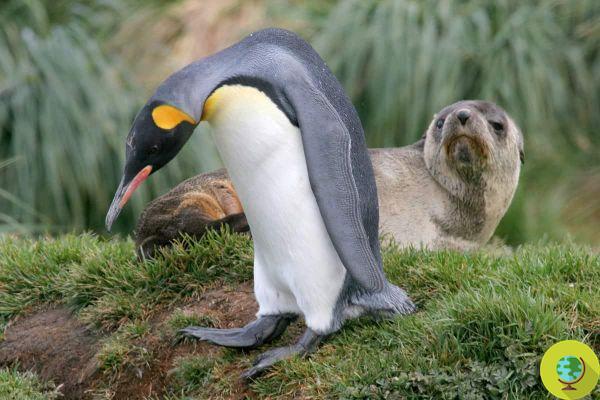
Where penguin and seal feces are found there is life. The excrements of these animals are real natural fertilizers, able to make even the desolate landscapes of Antarctica more vital
Where penguin and seal feces are found there is life. The excrements of these animals are real natural fertilizers, able to make even the desolate landscapes of Antarctica more vital.
This was revealed by a new study conducted by the Department of Ecological Sciences of the Vrije Universiteit in Amsterdam. According to scientists, the cold lands of Antarctica are inhospitable but not completely sterile. And the credit is also dthe seals and penguins and theirs poop.
As in all ecosystems, plants absorb solar energy through photosynthesis and transform it into nutrients. But they need to get it out of the ground.
These precious substances are unwittingly offered by penguins and seals. Specifically, scientists found that on the desolate Antarctic Peninsula, nitrogen-rich poop from penguin and seal colonies enriches the soil so significantly that it helps create biodiversity hotspots across the region. Their work found that the influence of droppings can extend to 1000 meters from the colony.
To prove this, the researchers braved the Antarctic cold and field-studied animal waste.
“What we see is that the poop produced by seals and penguins evaporates in part as ammonia. The latter is then captured by the wind and blown inland, makes its way into the ground and provides the nitrogen that primary producers need to survive in this landscape " has explained Stef Bokhorst, researcher of the Department of Ecological Sciences of the Vrije Universiteit of Amsterdam. "
In fact, this process allows ammonia to enrich an area up to 240 times the size of the colony. And the results of this enrichment are many and above all a thriving community of mosses and lichens, which in turn supports an incredible number of small invertebrates.
“You can find millions of them per square meter here, but in the prairies in the United States or Europe it's only 50.000-100.000 per square meter,” continues Bokhorst.
Unexpectedly, the authors found that the size of a colony's footprint has little to do with cold but depends a lot on the number of animals present. Using this information, Bokhorst and his colleagues were able to map biodiversity hotspots on the peninsula as well.
Unfortunately, they intervene once again to alter this perfect balance climate change. The introduction of invasive plant species, the seeds of which can be transported from South Africa and South America or by seabirds and humans, could change that.
"Just as penguin and seal colonies enrich the soil with native plants, it is also possible that they make it ideal for invasive species, which may be more resilient and provide shelter for predatory insects such as spiders and beetles," says Bokhorst.
Scientists hope to find out how the activities of penguin and seal colonies favor the presence of invasive species and prevent their spread.
The study was published in the journal Current Biology
READ also:
- The truth about the catastrophic disappearance of the emperor penguins in Antarctica
- Why does the wombat cube poop? Scientists find out why
Francesca Mancuso


























